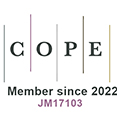REFERENCES
1. Ma Y, Zhao Y, Incecik A, Yan X, Wang Y, Li Z. A collision avoidance approach via negotiation protocol for a swarm of USVs. Ocean Eng 2021;224:108713.
2. Xu X, Lu Y, Liu X, Zhang W. Intelligent collision avoidance algorithms for USVs via deep reinforcement learning under COLREGs. Ocean Eng 2020;217:107704.
3. Ali H, Xiong G, Tianci Q, Kumar R, Dong X, Shen Z. Autonomous ship navigation with an enhanced safety collision avoidance technique. ISA Trans 2024;144:271-81.
4. Wang G, Wang J, Wang X, et al. A method for coastal global route planning of unmanned ships based on human-like thinking. J Mar Sci Eng 2024;12:476.
5. Tan Z, Wei N, Liu Z. Local path planning for unmanned surface vehicle based on the improved DWA algorithm. In: 2022 41st Chinese Control Conference (CCC); 2022 Jul 25-27; Hefei, China. IEEE; 2022. pp. 3820–5.
6. Han J, Cho Y, Kim J. Coastal SLAM with marine radar for USV operation in GPS-restricted situations. IEEE J Oceanic Eng 2019;44:300-9.
7. MahmoudZadeh S, Abbasi A, Yazdani A, Wang H, Liu Y. Uninterrupted path planning system for multi-USV sampling mission in a cluttered ocean environment. Ocean Eng 2022;254:111328.
8. Du B, Lin B, Zhang C, Dong B, Zhang W. Safe deep reinforcement learning-based adaptive control for USV interception mission. Ocean Eng 2022;246:110477.
9. Sun Z, Sun H, Li P, Zou J. Self-organizing cooperative pursuit strategy for multi-USV with dynamic obstacle ships. J Mar Sci Eng 2022;10:562.
10. Chen YL, Du WK, Hu XY, Bai GQ, Zhang JB. USV collision hazard assessment and track planning algorithm. Ocean Eng 2022;261:112149.
11. Wu C, Yu W, Li G, Liao W. Deep reinforcement learning with dynamic window approach based collision avoidance path planning for maritime autonomous surface ships. Ocean Eng 2023;284:115208.
12. Gonzalez-Garcia A, Castañeda H. Guidance and control based on adaptive sliding mode strategy for a USV subject to uncertainties. IEEE J Oceanic Eng 2021;46:1144-54.
13. Zheng K, Zhang X, Wang C, Zhang M, Cui H. A partially observable multi-ship collision avoidance decision-making model based on deep reinforcement learning. Ocean Coast Manage 2023;242:106689.
14. Gan W, Qu X, Song D, Yao P. Multi-USV cooperative chasing strategy based on obstacles assistance and deep reinforcement learning. IEEE Trans Autom Sci Eng 2024;21:5895-910.
15. Zhang G, Han J, Li J, Zhang X. APF-based intelligent navigation approach for USV in presence of mixed potential directions: Guidance and control design. Ocean Eng 2022;260:111972.
16. Gao D, Zhou P, Shi W, Wang T, Wang Y. A dynamic obstacle avoidance method for unmanned surface vehicle under the International Regulations for Preventing Collisions at Sea. J Mar Sci Eng 2022;10:901.
17. Zhao Y, Qi X, Ma Y, Li Z, Malekian R, Sotelo MA. Path following optimization for an underactuated USV using smoothly-convergent deep reinforcement learning. IEEE Trans Intell Transp Syst 2021;22:6208-20.
18. Mwaffo V. Formation control and collision avoidance of unmanned water surface vehicles in maritime environments. J Franklin I 2024;361:106791.
19. Zhou B, Huang B, Su Y, Zheng Y, Zheng S. Fixed-time neural network trajectory tracking control for underactuated surface vessels. Ocean Eng 2021;236:109416.
20. Deng Y, Zhang X, Im N, Zhang G, Zhang Q. Model-based event-triggered tracking control of underactuated surface vessels with minimum learning parameters. IEEE T Neur Net Learn Syst 2020;31:4001-14.
21. Ma Y, Mao Z, Wang T, Qin J, Ding W, Meng X. Obstacle avoidance path planning of unmanned submarine vehicle in ocean current environment based on improved firework-ant colony algorithm. Comput Electr Eng 2020;87:106773.
22. Wand H, Yi H, Xiang J, Fu Y. Collision avoidance path planning algorithm research and application of medium-sized USV based on COLREGS. Chin J Sh Res 2022;17:184-95.
23. Zhang W, Yan C, Lyu H, Wang P, Xue Z, Li Z. COLREGS-based path planning for ships at sea using velocity obstacles. IEEE Access 2021;9:32613-26.
24. He Y, Jin Y, Huang L, Xiong Y, Chen P, Mou J. Quantitative analysis of COLREG rules and seamanship for autonomous collision avoidance at open sea. Ocean Eng 2017;140:281-91.
25. Lu N, Zhou W, Yan H, Fei M, Wang Y. A two-stage dynamic collision avoidance algorithm for unmanned surface vehicles based on field theory and COLREGs. Ocean Eng 2022;259:111836.
26. Liang C, Zhang X, Watanabe Y, Deng Y. Autonomous collision avoidance of unmanned surface vehicles based on improved a star and minimum course alteration algorithms. Appl Ocean Res 2021;113:102755.
27. Chang L, Shan L, Jiang C, Dai Y. Reinforcement based mobile robot path planning with improved dynamic window approach in unknown environment. Auton Robot 2021;45:51-76.
28. Wang S, Hu Y, Liu Z, Ma L. Research on adaptive obstacle avoidance algorithm of robot based on DDPG-DWA. Comput Electr Eng 2023;109:108753.
29. Yang H, Xu X, Hong J. Automatic parking path planning of tracked vehicle based on improved A* and DWA algorithms. IEEE T Transp Electr 2023;9:283-92.
30. Bai X, Jiang H, Cui J, Lu K, Chen P, Zhang M. UAV path planning based on improved A* and DWA algorithms. Int J Aerospace Eng 2021;2021:4511252.
31. Li Y, Jin R, Xu X, Qian Y, Wang H, Xu S. A mobile robot path planning algorithm based on improved A* algorithm and dynamic window approach. IEEE Access 2022;10:57736-47.
32. Ji X, Feng S, Han Q, Yin H, Yu S. Improvement and fusion of A* algorithm and dynamic window approach considering complex environmental information. Arab J Sci Eng 2021;46:7445-59.
33. Ghasemi M, Rahimnejad A, Akbari E, et al. A new metaphor-less simple algorithm based on Rao algorithms: a fully informed search algorithm (FISA). PeerJ Comput Sci 2023;9:e1431.
34. Wang X, Feng K, Wang G, Wang Q. Local path optimization method for unmanned ship based on particle swarm acceleration calculation and dynamic optimal control. Appl Ocean Res 2021;110:102588.
35. Zhou XY, Huang JJ, Wang FW, Wu ZL, Liu ZJ. A study of the application barriers to the use of autonomous ships posed by the good seamanship requirement of COLREGs. J Navigation 2020;73:710-25.









